Sunday Solar Eclipse: Skywatchers to Chase Moon's Shadow by Land, Sea & Air
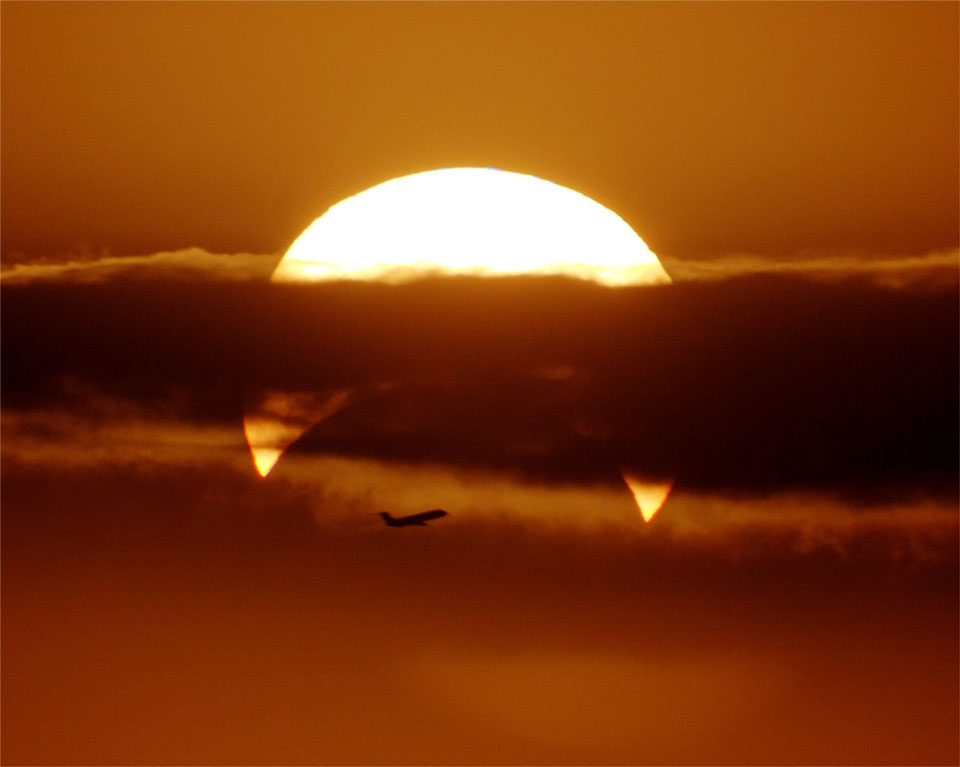
Editor's Note: See the first photos and accounts of Sunday's solar eclipse by eclipse chasers here: Rare Solar Eclipse Wows Skywatchers Across Atlantic, Africa (Photos)
The only total solar eclipse of 2013 will occur Sunday, but will be harder to see by eclipse-chasers because of its short duration and the remote path from which it will be visible. Yet, several groups will still chase the rare solar spectacle from the ground, sea and even the air.
Sunday's eclipse of the sun by the moon actually takes the form of a hybrid solar eclipse, which means that somewhere along its path — in this case, only its far western tip — the moon will not appear large enough to completely block the sun. Observers in that portion of Earth's surface will see an annular eclipse, or a "ring of fire" solar eclipse, in which a thin or broken ring of sunlight remains visible around the moon's outline. [How to See Sunday's Solar Eclipse]
You can watch a webcast of the solar eclipse live on SPACE.com, courtesy of the online community telescope Slooh.com. The webcast will begin at 6:45 a.m. EDT (1145 GMT) and last about four hours.
As the shadow moves eastwards and the curvature of the Earth brings its surface slightly closer to the moon, a transition point is reached between annular and total where the apparent diameter of both the sun and the moon are identical. As they slide past one another, the sun's rays at that spot would be blocked for just an instant. From that point eastward, the apparent diameter of the moon is larger than the sun, and the eclipse is total along the rest of the path.

Rare solar eclipse path
Hybrid eclipses are rare compared to pure total or annular ones. The last occurred in April 2005 over the Pacific Ocean and the next will not come until 2023. (Annular "ring of fire" solar eclipses by themselves occur about as often as totals; the most recent was on May 10 of this year.)
Get the Space.com Newsletter
Breaking space news, the latest updates on rocket launches, skywatching events and more!
Beginning at sunrise in the central-Atlantic south of Bermuda, the shadow will race across the ocean, where it will reach a maximum duration of about 99 seconds at a spot south of the central-African country of Ivory Coast and west of Gabon. The path continues eastward, crossing the geographical point of 0 degrees latitude and 0 degrees longitude, before finally make landfall in the West-African country of Gabon. [Rare Hybrid Solar Eclipse of Nov. 3 Explained (Video)]
It will then trace its way through the Republic of the Congo, the Democratic Republic of the Congo, Uganda and end near sunset in Kenya and Ethiopia, as well as barely touching Somalia. The duration will be no greater than about 20 seconds in this part of the world, and less than ten as it approaches its geographical limit at sunset.
The length even at the maximum point is short compared to most total solar eclipses, which can range from an average of a few minutes, to a maximum possible time of seven minutes and 31 seconds. Cartographer Michael Zeiler of Eclipse-Maps.com has created a series of maps chronicling the progression of Sunday's solar eclipse at his Nov. 3 eclipse website here.
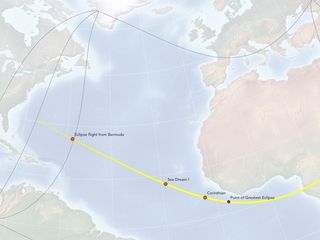
Less solar eclipse-chasing
Because this year's hybrid solar eclipse is so short and falls in a remote geographical area with less infrastructure for eclipse-chasing tours or cruises, as well as poorer weather prospects, many are opting to skip the event this time. But not everyone.
Several astronomy tour groups are already on the ground in Africa. Most are primarily headed to Kenya and Ethiopia, where the weather prospects on land are the best but the eclipse clocks in at mere seconds.

In the best locations, forecast experts put the odds of success around 60 to 70 percent, but caution that mobility, if needed at the last minute, will be highly limited due to a lack of good roads. In more central and western Africa, the odds are down near 40 percent or less, as tropical moisture frequently leads to widespread afternoon storms. Only a few eclipse chasers are attempting to view the event on land in Western Africa, namely coastal Gabon, where they are weighing the promising longer duration of totality (60 seconds is about the longest on land) against the weather odds. [How to Safely Photograph the Nov. 3 Solar Eclipse (Photo Guide)]
Some die-hard chasers are aiming to see the maximum possible duration of totality (99 seconds) or as close as they can to it. At least three small-ship expedition cruises are headed into the Atlantic to sneak a peek at totality. The Corinthian, a 100-passenger boat, is on a two-week adventure from Spain to Sierra Leone and will view from the point of greatest duration.
Another ship, the tall-mast sailing ship Star Flyer, has embarked on a trip-of-a-lifetime for its 170 passengers, sailing on a 23-day voyage across the ocean from Malaga, Spain, to Barbados. They should a little under a minute of totality. A third ship, the 112-passenger Sea Dream 1, is also headed across the ocean from the Canary Islands to Barbados. They will get 69 seconds of darkness at their location.
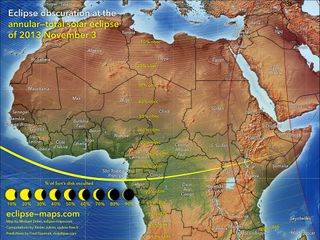
Potential eclipse-chasing history in the air
One small group of 12 eclipse chasers is hoping to make history Sunday by flying into the moon's shadow — called the "umbra" — over the Central Atlantic Ocean.
The eclipse chasers are aiming to intercept the moon's racing shadow aboard a chartered business jet departing from Bermuda. The goal is approximately seven seconds of darkness, at a point about 600 miles (965 kilometers) to the southeast of the island. [Amazing Total Solar Eclipse Photos (Gallery)]
What makes the Bermuda flight this year special? If successful, the flight will make a bit of history. Because the plane is attempting the intercept near the sunrise (western) end of this particular eclipse path, flying with the shadow is not a good option, as the sun would be almost in front of the aircraft and not visible out the side windows.
It will also mark just the second time a plane has viewed such a short duration eclipse successfully. In 1986, Glenn Schneider, an astronomer at the University of Arizona and one of the world's leading eclipse scientists, viewed an eclipse of precisely zero seconds from an aircraft; one in which the apparent size of the moon and sun were identical.
Like with other flights, this one was also done by flying with the path and allowing the shadow to catch up to the aircraft. A similar intercept, of a 1.4 second totality, was also attempted in 1930 using a biplane over California, but it was not successful.
So to accomplish this intercept, the plane must cross the shadow's path nearly perpendicular as it sweeps across the Earth. Making it harder still, the shadow here, near where it first touches down on Earth, is much faster than it would be near the central portion, on the order of 8,000 mph (13,000 km/h). In the center of the shadow, the duration from a fixed spot on the ocean is less than 10 seconds, which means the plane must arrive at the proper location at a precise instant with almost no margin for error. (Full Disclosure: I will be aboard the Bermuda flight).
It will be the first time such an intercept is attempted. Luckily, modern day computers and GPS satellite navigation make the prospects of success higher than they might seem.
Flying high for solar eclipses
Eclipse flights are nothing new. Chartering a plane, even one as large as a 747 jumbo jet, has become common for eclipses, particularly if they are located in hard-to-reach places or where the weather prospects are poor. But it can't be attempted from just anywhere. [How Solar Eclipses Work (Infographic)]
From the location the plane chooses, the sun and moon must be low enough in the sky to be seen out the side windows. This generally limits viewing to eclipses which are at higher latitudes, where the sun's maximum altitude during the day is still low, or at the far eastern or western ends of an eclipse path, where the sun would be near sunrise or sunset at the time of totality.
Being in an aircraft at high altitude offers two key advantages over observing on the ground. The obvious one is being above the weather that might block the view on the ground. But in addition, being high up means the observers and scientific equipment are above a large part of the distorting atmosphere and have a clearer view, much the way the best telescopes are located on top of mountains around the world.
Aircraft eclipse attempts in small aircraft date way back to 1918, and in the last couple of decades the method has become an alternative for groups of hobbyists who want a relaxing and worry-free experience. Commercial aircraft, from smaller 737 jets to huge 747 jumbo jet, have been used to take paying passengers into the sky to observe totality without worrying about weather.
To maximize observing on the aircraft, the plane attempts to fly with the shadow, which can extend the length of totality for viewers. The all-time record for an eclipse duration was set in 1973 by the Concorde, which flew a special scientific observation flight over Africa. The supersonic jet was able to travel with the shadow at nearly the same speed, extending totality to a remarkable 74 minutes!
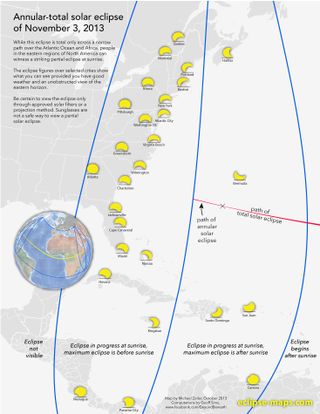
Partial solar eclipse visible from US East Coast
Viewers on the East Coast of the United States will be able to view the partially-eclipsed sun when it rises early Sunday morning. [Hybrid Solar Eclipse of Nov. 3, 2013: Visibility Maps & Photos]
Depending on your location, you will be able to see as much as about 50 percent of the sun eclipsed, in areas along coastal Virginia and North Carolina, and a little less of the sun’s disk blocked as you extend further north or south along the East Coast.
Warning: Remember that as the sun rises and its brightness rapidly increases, only proper eye protection from the sun's harmful rays will make it safe enough to observe with the naked eye. Be sure to acquire specially-made eclipse filters or glasses, and use proper solar filters on your camera to safely observe the sun.
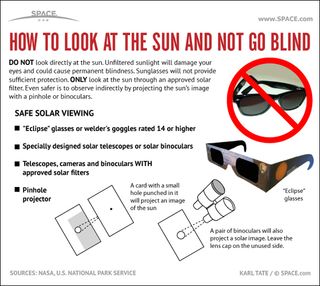
If you do not have access to filters, number 13 or 14 welder's glass can act as a proper solar filter, or you can make a pinhole camera by punching a hole through a piece of cardboard or paper to project an image of the sun onto the ground or another piece of paper. The image will show a clear picture of the sun during the eclipse. (It is not safe to use old camera film, CDs or DVDs or other semi-transparent objects).
Partial phases of this year's eclipse will also be visible across northern South America, very southern Europe such as Spain and Portugal, southern Italy and Greece as well as most of Africa.
If you could not make it to the path of totality this year, you can watch a live webcast from Africa courtesy of Slooh. It can also be seen on Slooh's mobile app for iPads and iPhones.
"Slooh, the community observatory, is sending host and technical officer, Paul Cox, on a wild expedition to the remote countryside of Kenya to globally broadcast the great spectacle of a total solar eclipse, live on Slooh.com," Slooh officials said in a statement. "The coverage of the eclipse will be hosted by Cox and will include a range of special guests including documentary filmmaker Duncan Copp and Slooh astronomer Bob Berman. Viewers can ask questions to the panel during the broadcast using the Twitter hashtag #solareclipse."
Future solar eclipse opportunities
Total solar eclipses happen on average about every 18 months somewhere on Earth, usually in a narrow path that traces across nearly half the globe. Frequently, they occur in patterns where there might be two or three each at one year apart, followed by a longer gap, sometimes as much as two-and-a-half years. Such was the case most recently, with total eclipses in August 2008, July 2009 and July 2010, followed by the most recent total solar eclipse of November 2012.
The next total eclipse of the sun will occur on March 20, 2015, in a region stretching from the far north Atlantic Ocean south of Greenland, across the Norwegian Sea off Iceland and into the Arctic Ocean. Touching just two spots on land, the Faroe Islands north of Scotland and Svalbard north of Norway, the eclipse track will end at the North Pole, where the sun is rising for the first time that year on the equinox.
That solar eclipse will be followed by another on March 8 and 9, 2016, when the moon's shadow will streak from Indonesia across the open Pacific Ocean, ending at sunset west of Hawaii. And if you're wondering when the United States will see one, you will have to wait a little longer.
For the first time since 1979, the continental United States will see totality on Aug. 21, 2017, in a track passing through the country from the west coast and Salem, Oregon, to the east coast and Charleston, South Carolina. If you're planning early, the best overall weather prospects will be out west, in areas of Oregon, Idaho, Wyoming and Nebraska. The United States will see another total eclipse in 2024, and again in 2045.
While not nearly as spectacular, a partial eclipse of the sun will also take place on Oct. 23, 2014, over most of the United States and Canada.
Editor's note: If you snap an amazing photo of Sunday's solar eclipse or any other celestial sight that you'd like to share for a possible story or image gallery, please contact managing editor Tariq Malik at spacephotos@space.com.
Follow us @Spacedotcom, Facebook and Google+. Original article on SPACE.com.
Join our Space Forums to keep talking space on the latest missions, night sky and more! And if you have a news tip, correction or comment, let us know at: community@space.com.










